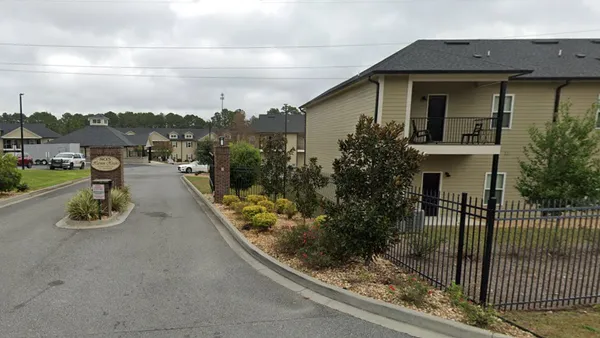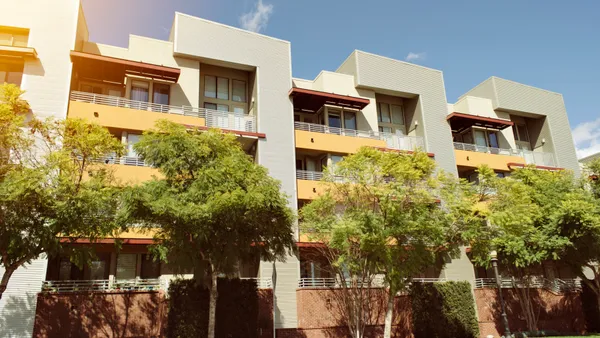This article is the fourth in a series looking at the effects of international investors on America’s multifamily sector.
Pensions, sovereign wealth funds and other foreign institutions spent $70.8 billion on commercial real estate in the United States last year, nearly double the deal volume in 2020, according to the MSCI and Real Capital Analytics’ 2022 Cross-Border Compendium shared with Multifamily Dive.
Over the next three to five years, 86% of foreign investors are planning to increase their positions in multifamily, now the most favored property type, according to the 2021 Association of Foreign Investors in Real Estate (AFIRE).
The markets for this type of investment are changing, analysts say. As renters leave large coastal gateway cities for the Sun Belt and growing tech hubs, cross-border investors are chasing them.
New York, Los Angeles, Chicago and San Francisco lost more than 700,000 residents between mid-2020 and mid-2021, for example, while Phoenix, Houston, Dallas, Austin and Atlanta gained 300,000, according to a Census Bureau report.
As some foreign investors head to the suburbs, they’re starting to look closer at smaller garden-style apartment buildings more prevalent there, but they still lean heavily toward new high-rise buildings, according to Jim Costello, senior vice president and chief economist for RCA.
Cross-border investors look for more conservative assets, Costello said, adding, “They have a lot of money to deploy at once, and they’re not going to buy a $2 million apartment building in Knoxville, Tennessee. Not that that’s not a great apartment building or a great investment — it’s just that, operationally, they can’t get their heads around it.”
Getting social
They are also eyeing student and senior housing and are looking for ESG-compliant assets, according to CBRE’s 2022 Multifamily U.S. Real Estate Market Outlook. Investors from Europe, where these types of environmental, social and governance requirements are expected, are starting to insist properties meet sustainability, resilience and wellness metrics.
“Particular investors, especially from Europe, will not touch any property that does not check several of these boxes,” according to Riaz Cassum, executive managing director, capital markets, and global head of international capital coverage for JLL. “That’s why the German funds, for example … won’t go into committee with a deal that doesn’t check those boxes because it won’t be approved.”
Aaron Jodka, national director of capital markets research for Colliers, expects more cross-border investment in affordable housing as pension funds and individual companies focus more on ESG.
“That social aspect in housing has been a perennial challenge in the United States,” he said. “That will be an interesting dynamic to watch in years to come.”










